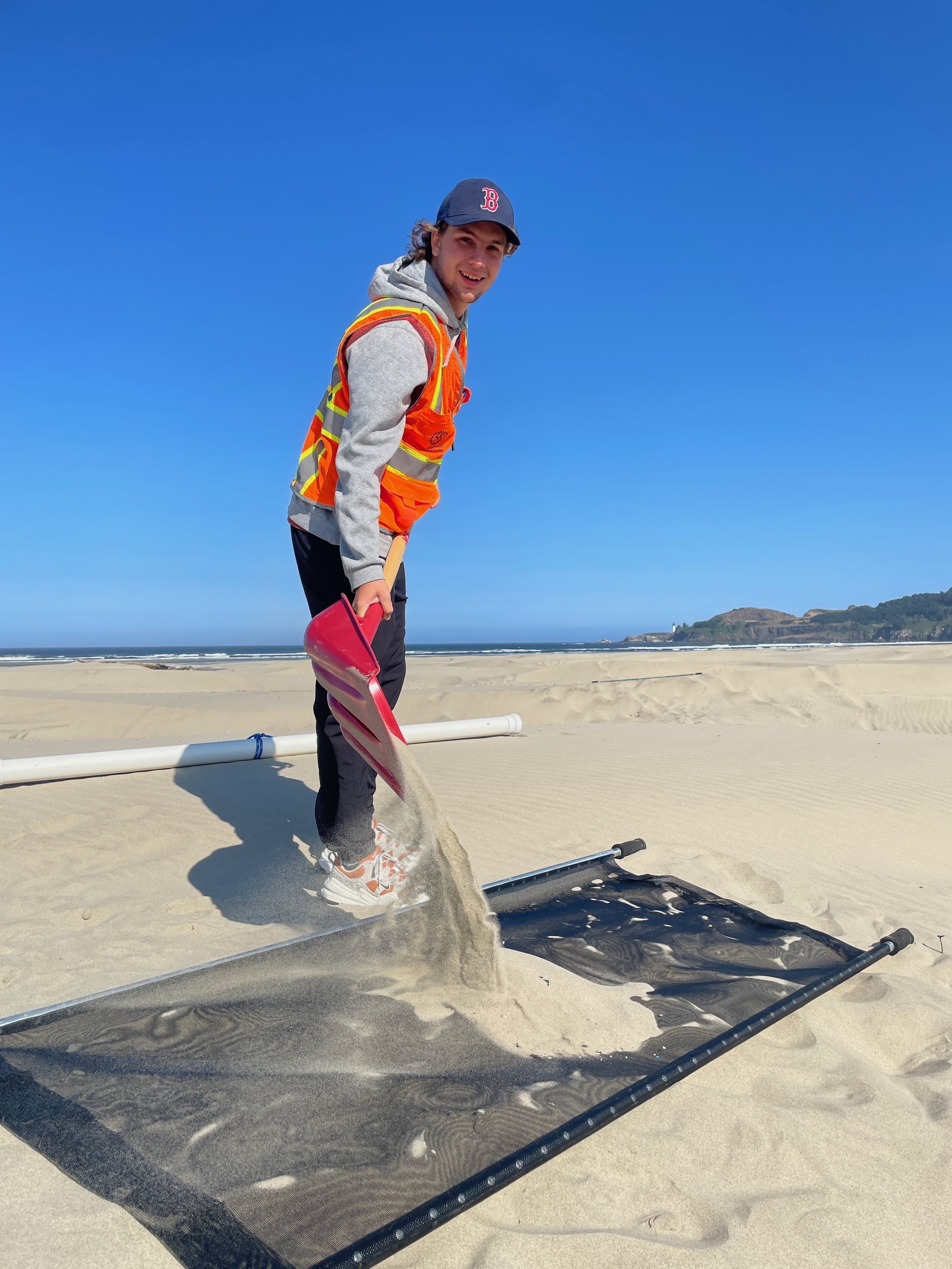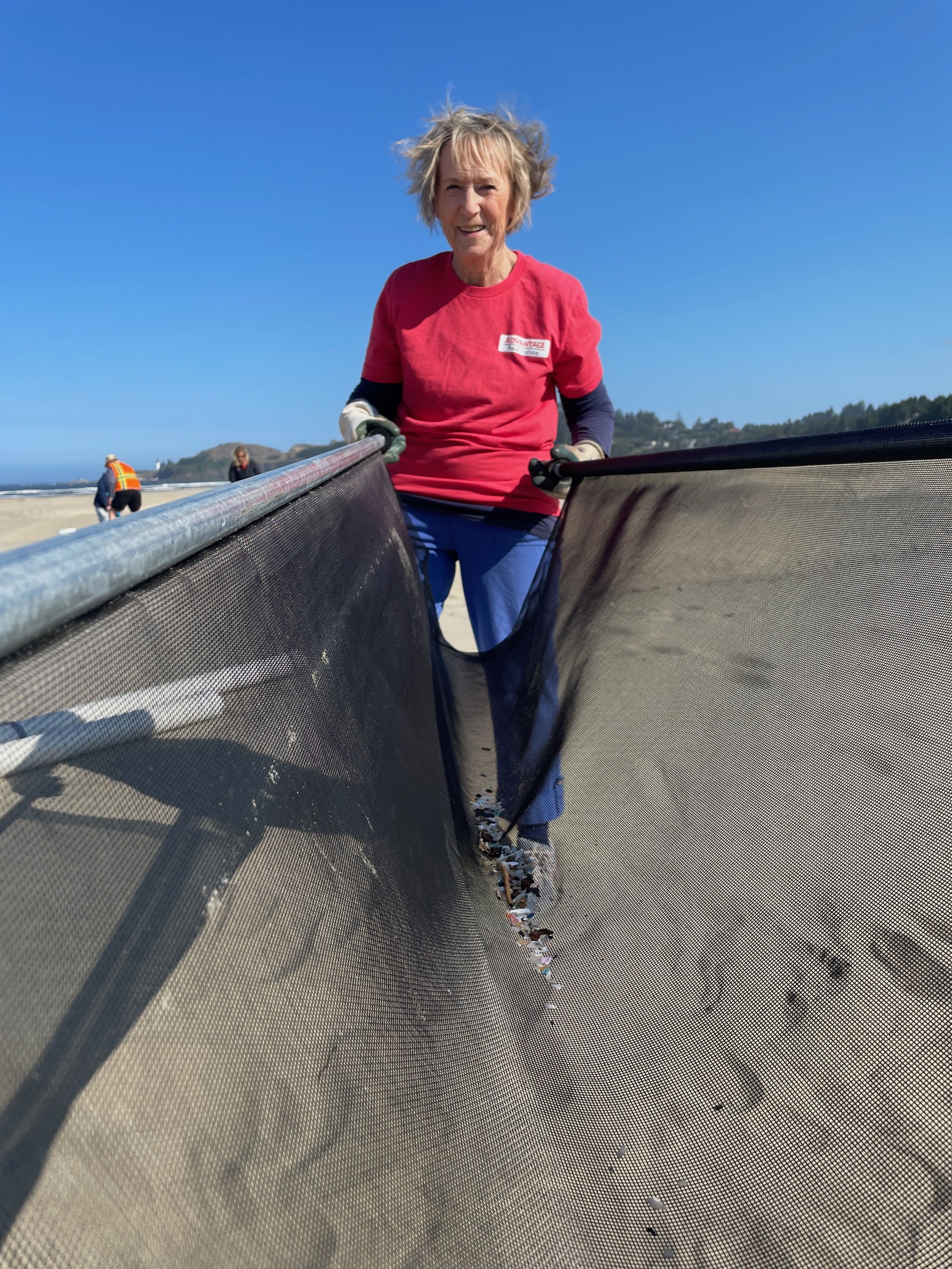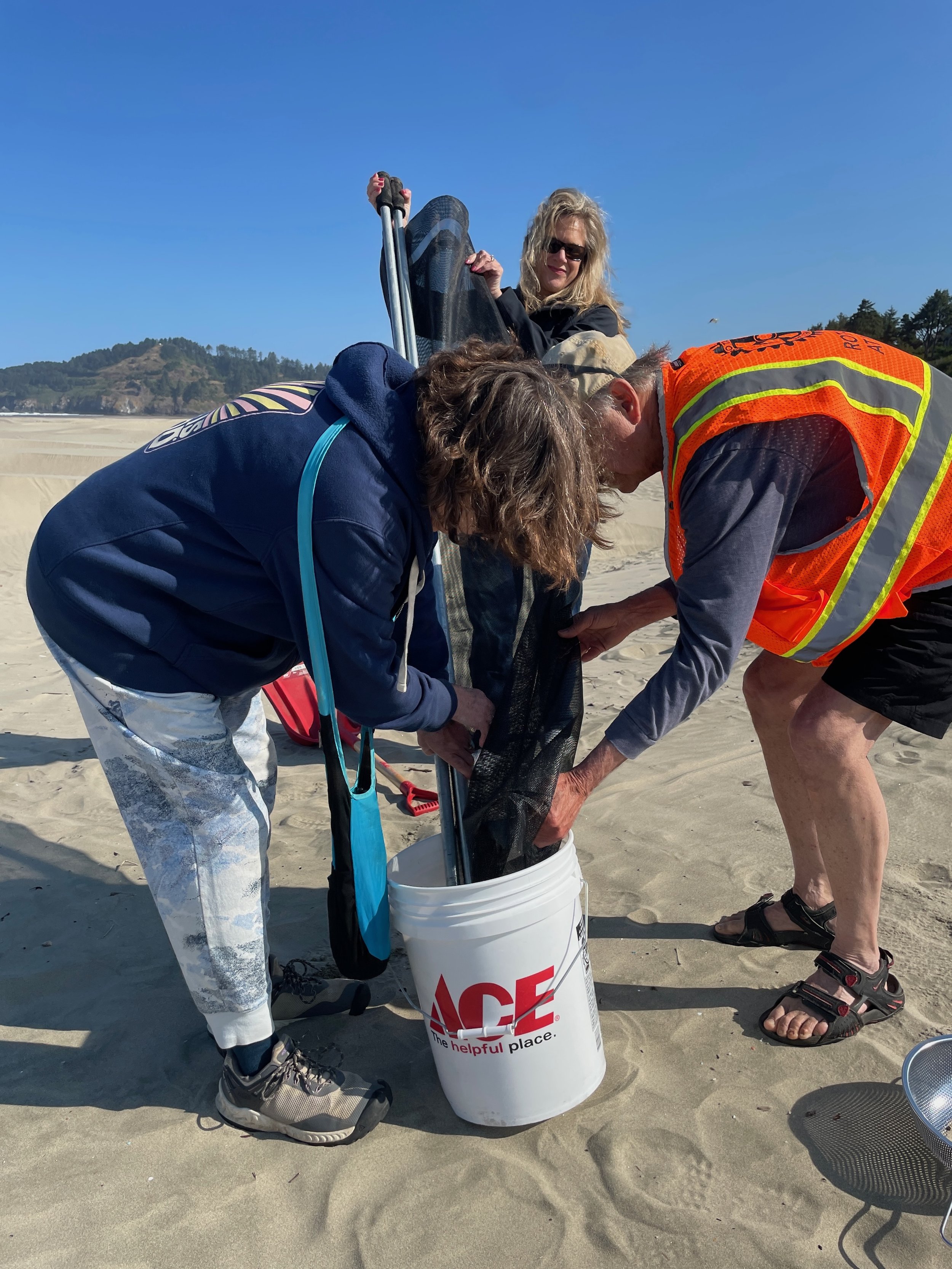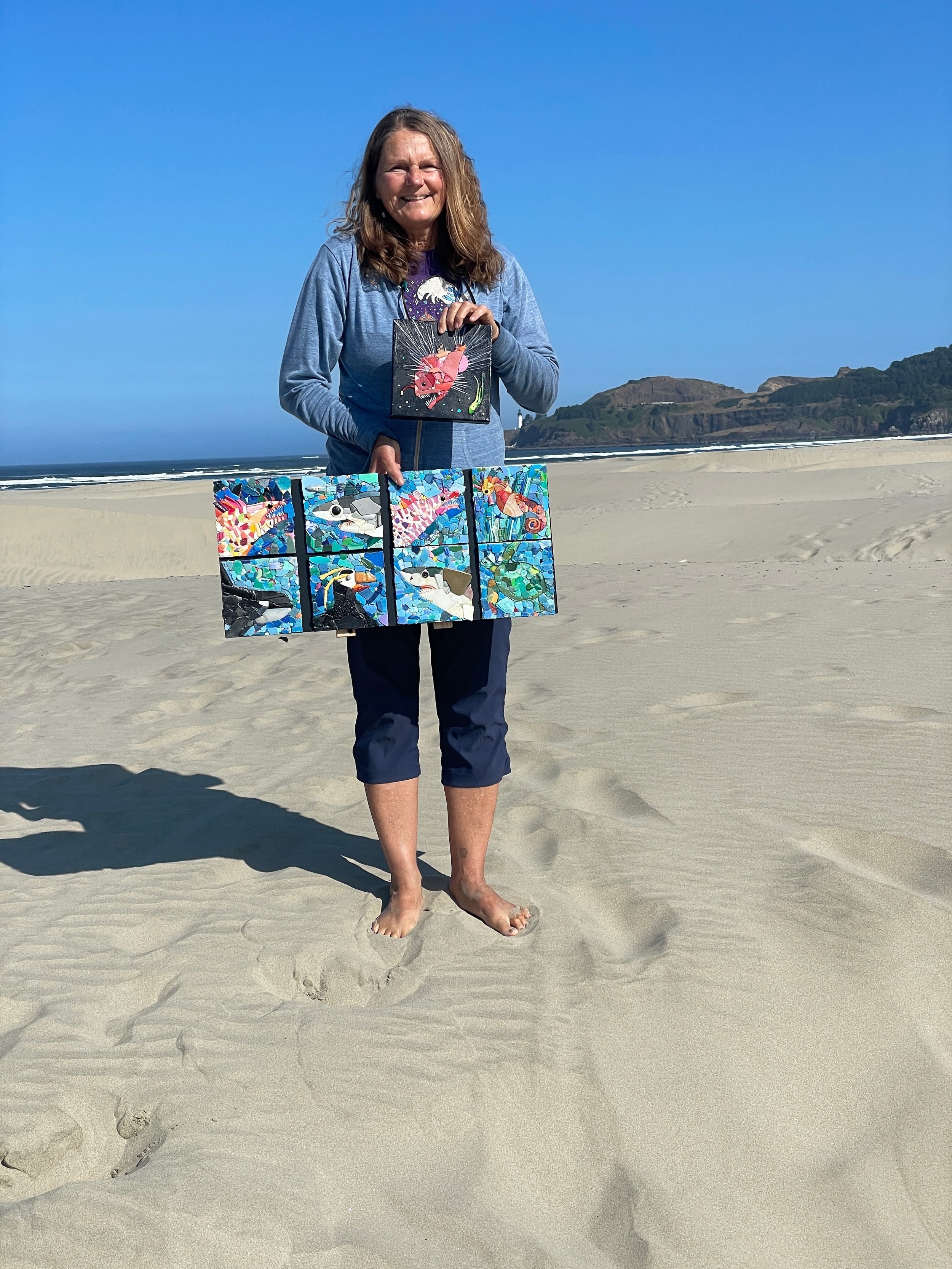Sieve the planet
Sift into action with Newport’s microplastic cleanups
By Gretchen Ammerman
Oregon Coast TODAY




It would almost be a pretty sight if you don’t know what those tiny spots of color increasingly dotting the beaches are.
But once you learn that if they are able to make their way to the ocean, those little pieces of plastic become a deadly meal for fish, birds and sea mammals, the sight becomes all too ugly.
Enter Guy Faust, who approached the Rotary Club of Newport with a plan to get as many of the harmful particles off of Agate Beach, a place that tends to have a high concentration of them, as is possible in one summer. Most organized beach cleanups pick up the larger pieces of trash on the beach, but leave the small pieces behind because they are so hard to pick up individually.
With shovels, sieves and special screens designed specifically to separate junk from sand, the club will be hosting two-hour daily cleanup events throughout the end of September.
“This won’t even be a drop in the ocean of all that is out there, but every single piece of plastic we get off the beach won’t be floating around in the ocean for hundreds of years,” Faust said. “When you do these cleanups, you come back with a different mind set, that’s what we are trying to spread.”
According to Faust, Rotary international had six areas of focus, like eradicating polio for example.
“Two years ago they came up with a seventh: climate change,” he said. “We are asking people to do four things, conserve water, conserve electricity, recycle and maybe even do a little beach cleanup, specifically microplastics. So they asked people to come up with ideas.”
With funding that ranged from a $100 check from the City of Florence to a $10,000 grant from the City of Newport, the club was able to fund two interns to run the cleanups. The vision is that groups of people, like large families visiting the coast or local businesses looking for a good bonding exercise for their employees, will help the program succeed. Because teamwork makes the screens work, at least two people are needed to make a cleanup happen.
Elliot Crowder, a student at the University of Oregon with an interest in environmental law, is the weekday intern.
“I thought that the project sounded really cool when Guy reached out to me about it,” Crowder said. “Not only is it a topic I’m excited about but I also like that it is a way to support my community while I’m home for the summer. If no one is signed up, I just go around town and promote the program.”
According to Crowder, after removing plastics for an hour, you can’t help but think about your own use of it, especially single use plastics.
“Obviously, we appreciate the time the volunteers give us to help clean the beach,” he said. “But to me, the greater impact will be a change in the choices people make after having this experience. If that could come out of this, I would be over the moon happy.”
Plastic waste isn’t just a problem for those who live in or fly over the ocean; humans are affected too.
“I heard about a study they tried to do on the effects of plastics on humans,” Crowder said. “But when they tried to find people that were not affected by them for comparison they couldn’t find a single person that doesn’t have some in their system.”
Though each piece on the beach is small, the system of collection results in hauls as large as eight pounds in one collection event.
“It’s incredibly satisfying, Crowder said. “Every time you screen the sand and see how much is in there, you really feel the impact of what you are doing.”
As ugly as they are on the beach, once collected, microplastics can become something beautiful again.
“I noticed so much plastic when I would walk on the beach and I was horrified by it,” said science Illustrator and multimedia artist Rena Ekmanis, who moved to Newport two years ago. “So I started incorporating it into my artwork. My daughter Iris had an old surfboard and I ended up covering it up with microplastics for a full mosaic. Now I’m not interested in doing mosaics with anything other than microplastics.”
Ekmanis, who currently has a piece hanging in the Yaquina Head Interpretive Center, said her new art form has given her an even deeper awareness of and concern about plastics on the beach.
“I’ve always loved beachcombing,” she said, “but now I end up looking for and picking up plastics the whole time.”
Hopefully, with more engagement in the Rotary Club beach cleanups, Ekmanis will have to work harder to find any more tiny tiles on Agate Beach.
“We have everything ready to go, we just need people to come out and do it,” Crowder said. “If I could do it by myself I would come every day until the beach is clean.”
For more information and to sign up for a clean up, go to eco-friendlyvolunteer.org.
